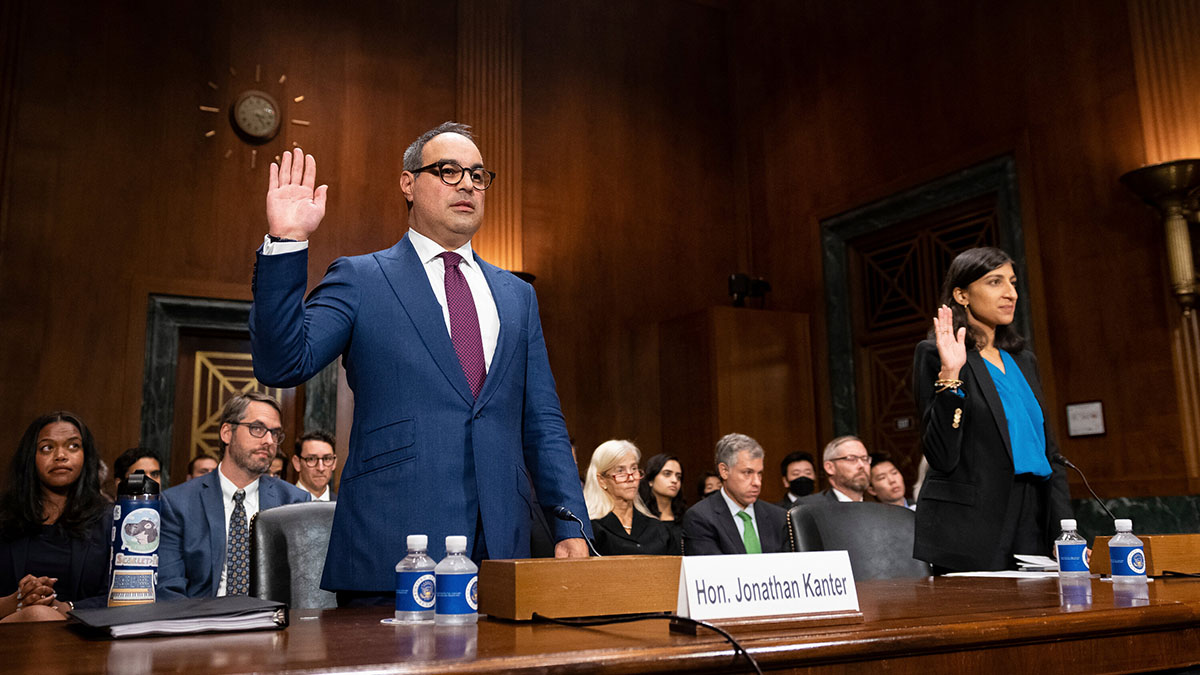

Finance
Why Do Mergers And Acquisitions Take Long?
Published: February 25, 2024
Discover the reasons behind the prolonged duration of mergers and acquisitions in the finance industry. Learn about the complexities and processes involved.
(Many of the links in this article redirect to a specific reviewed product. Your purchase of these products through affiliate links helps to generate commission for LiveWell, at no extra cost. Learn more)
Table of Contents
- Understanding the Prolonged Nature of Mergers and Acquisitions
- Navigating the Intricate Pathways of Mergers and Acquisitions
- The Crucial Role of Diligent Investigation in Mergers and Acquisitions
- Navigating the Regulatory Landscape: A Crucial Hurdle in Mergers and Acquisitions
- The Deliberative Art of Negotiating and Deciding in Mergers and Acquisitions
- Harmonizing Organizational Cultures in Mergers and Acquisitions
- Navigating the Complex Legal and Financial Terrain of Mergers and Acquisitions
- Navigating the Prolonged Pathways of Mergers and Acquisitions
Introduction
Understanding the Prolonged Nature of Mergers and Acquisitions
Mergers and acquisitions (M&A) are pivotal events in the business world, often representing significant milestones for companies seeking growth, diversification, or strategic repositioning. However, the process of M&A is widely recognized for its time-consuming nature, often extending far beyond initial expectations. This article delves into the multifaceted reasons behind the protracted timelines associated with mergers and acquisitions, shedding light on the intricate web of factors that contribute to this phenomenon.
The journey of M&A is rife with complexities and challenges that can impede a swift and seamless transition. From due diligence and regulatory approvals to negotiations and cultural integration, each phase demands meticulous attention and deliberation. By unraveling the layers of intricacy within the M&A process, we can gain a deeper understanding of why these transactions often unfold over extended periods, providing valuable insights for businesses and stakeholders navigating this terrain.
Complexity of the Process
Navigating the Intricate Pathways of Mergers and Acquisitions
The landscape of mergers and acquisitions is marked by a labyrinth of complexities that intricately weave together to create a formidable challenge for all involved parties. The sheer magnitude of the undertaking, coupled with the diverse array of moving parts, contributes to the prolonged nature of M&A transactions.
One of the primary factors contributing to the complexity of M&A lies in the amalgamation of two distinct organizational entities, each with its own unique culture, operational framework, and strategic direction. The process of aligning these disparate elements demands a meticulous approach, as the integration of people, processes, and systems is a multifaceted endeavor that necessitates careful planning and execution.
Moreover, the financial intricacies inherent in M&A transactions further amplify the complexity of the process. From valuation and financial due diligence to restructuring and capital allocation, the financial dimension of M&A requires a comprehensive understanding of market dynamics, regulatory frameworks, and risk management strategies. This intricate financial landscape often entails protracted deliberations and meticulous analysis, contributing to the extended timelines associated with mergers and acquisitions.
Furthermore, the intricate web of legal considerations, including contracts, intellectual property rights, and compliance frameworks, adds another layer of complexity to the M&A process. Navigating the legal intricacies demands a thorough examination of contractual obligations, potential liabilities, and regulatory compliance, often necessitating extensive negotiations and meticulous review processes that can significantly extend the duration of the transaction.
In essence, the complexity of the M&A process stems from the convergence of multifaceted elements, including organizational integration, financial intricacies, and legal considerations, all of which contribute to the protracted nature of mergers and acquisitions.
Due Diligence
The Crucial Role of Diligent Investigation in Mergers and Acquisitions
One of the pivotal phases that significantly contributes to the prolonged duration of mergers and acquisitions is the process of due diligence. This critical stage involves a comprehensive investigation and analysis of the target company, encompassing its financial, operational, legal, and regulatory aspects. The meticulous nature of due diligence serves as a fundamental safeguard for the acquiring entity, providing invaluable insights into the target company’s assets, liabilities, and overall viability.
Financial due diligence, in particular, plays a central role in the M&A process, involving an in-depth examination of the target company’s financial statements, cash flow projections, and historical performance. This meticulous scrutiny aims to uncover any potential financial risks, irregularities, or undisclosed liabilities, ensuring that the acquiring entity possesses a comprehensive understanding of the target company’s financial standing.
Operational due diligence is equally crucial, delving into the operational framework, processes, and capabilities of the target company. This entails a thorough assessment of production facilities, supply chain dynamics, and technological infrastructure, aiming to identify any operational inefficiencies, risks, or compatibility issues that may impact the post-merger integration process.
Legal and regulatory due diligence further amplifies the complexity and duration of the M&A process. This phase involves a meticulous review of contracts, intellectual property rights, compliance frameworks, and potential legal liabilities, necessitating extensive legal analysis and documentation review. Additionally, regulatory considerations, including antitrust regulations and industry-specific compliance requirements, demand careful examination to ensure adherence to legal and regulatory standards.
The comprehensive nature of due diligence, spanning financial, operational, legal, and regulatory dimensions, contributes to the protracted timelines associated with mergers and acquisitions. The meticulous investigation and analysis inherent in due diligence serve as a crucial risk mitigation strategy, providing the acquiring entity with a comprehensive understanding of the target company’s intricacies and potential challenges, albeit at the cost of extended timelines.
Regulatory Approvals
Navigating the Regulatory Landscape: A Crucial Hurdle in Mergers and Acquisitions
Obtaining regulatory approvals stands as a pivotal phase in the M&A process, often contributing significantly to the extended timelines associated with these transactions. The regulatory landscape governing mergers and acquisitions encompasses a diverse array of considerations, including antitrust regulations, industry-specific compliance requirements, and governmental approvals, all of which demand meticulous attention and procedural adherence.
Antitrust regulations, in particular, play a central role in the M&A process, aiming to prevent anti-competitive practices and safeguard market competition. The scrutiny of antitrust authorities entails a comprehensive evaluation of the potential impact of the merger or acquisition on market dynamics, consumer welfare, and industry competition. This rigorous assessment often entails protracted deliberations and extensive documentation, as acquiring entities navigate the complexities of antitrust regulations to secure the necessary approvals.
Industry-specific regulatory considerations further contribute to the prolonged nature of mergers and acquisitions. In sectors such as healthcare, finance, and telecommunications, stringent regulatory frameworks dictate the parameters within which M&A transactions must operate. Compliance with industry-specific regulations demands meticulous attention to detail, often necessitating extensive negotiations and documentation to ensure adherence to regulatory standards and secure the requisite approvals.
Moreover, governmental approvals, particularly in cross-border transactions, add another layer of complexity to the regulatory landscape of M&A. Navigating the intricacies of international regulations and securing approvals from relevant governmental bodies demands a comprehensive understanding of cross-border compliance requirements, often extending the duration of the transaction as acquiring entities engage in extensive regulatory interactions and procedural formalities.
In essence, the multifaceted nature of regulatory approvals, encompassing antitrust regulations, industry-specific compliance considerations, and governmental approvals, significantly contributes to the prolonged timelines associated with mergers and acquisitions. Navigating the regulatory landscape demands meticulous attention to procedural adherence, comprehensive documentation, and extensive negotiations, all of which collectively extend the duration of the M&A process.
Negotiations and Decision Making
The Deliberative Art of Negotiating and Deciding in Mergers and Acquisitions
The phase of negotiations and decision making constitutes a pivotal juncture in the M&A process, often contributing to the protracted timelines associated with these transactions. This stage involves intricate deliberations, strategic negotiations, and decisive determinations that shape the trajectory of the merger or acquisition, demanding meticulous attention and comprehensive analysis.
Negotiations between the acquiring entity and the target company encompass a diverse array of considerations, including valuation, deal structuring, and post-merger integration strategies. The complexities inherent in these negotiations, coupled with the need to align divergent perspectives and interests, often lead to protracted deliberations as both parties seek to reach mutually beneficial terms and agreements.
Furthermore, the decision-making process within the acquiring entity involves a comprehensive evaluation of strategic, financial, and operational considerations. This entails meticulous analysis of the potential synergies, risks, and long-term implications of the M&A transaction, demanding a thorough assessment of the strategic alignment and value proposition of the deal. The deliberative nature of this decision-making process often extends the duration of the transaction, as acquiring entities engage in comprehensive analyses and strategic evaluations to ensure the viability and long-term success of the M&A endeavor.
Moreover, the intricacies of cultural integration and organizational alignment add another layer of complexity to the negotiations and decision-making phase. Aligning the cultural frameworks, operational processes, and strategic visions of the two entities demands meticulous attention and strategic foresight, often necessitating protracted negotiations and comprehensive decision-making processes to ensure a harmonious integration and seamless transition.
In essence, the phase of negotiations and decision making significantly contributes to the prolonged timelines associated with mergers and acquisitions. The intricate nature of negotiations, coupled with the comprehensive analysis and strategic evaluations inherent in the decision-making process, collectively extend the duration of the M&A transaction, as acquiring entities navigate the complexities of aligning divergent perspectives, interests, and operational frameworks.
Cultural Integration
Harmonizing Organizational Cultures in Mergers and Acquisitions
The phase of cultural integration stands as a pivotal aspect of mergers and acquisitions, often contributing to the protracted timelines associated with these transformative transactions. The convergence of two distinct organizational cultures, each with its own values, operational norms, and strategic orientations, presents a formidable challenge that demands meticulous attention and strategic foresight.
Harmonizing organizational cultures involves a comprehensive assessment of the cultural frameworks, communication dynamics, and employee engagement strategies within both the acquiring and target entities. This phase necessitates a deliberate approach to aligning cultural values, fostering open communication channels, and cultivating a cohesive organizational identity that transcends the boundaries of the two merging entities.
The complexities inherent in cultural integration often lead to protracted timelines, as acquiring entities navigate the intricacies of organizational alignment, employee engagement, and change management strategies. The process of cultural integration demands meticulous attention to the emotional and psychological dimensions of organizational change, as employees from both entities adapt to new operational frameworks, leadership structures, and collaborative dynamics.
Moreover, the phase of cultural integration extends beyond the initial stages of the merger or acquisition, encompassing the long-term cultivation of a unified organizational culture that embodies the shared values and strategic vision of the integrated entity. This ongoing process of cultural alignment and organizational cohesion demands sustained efforts and strategic initiatives, contributing to the prolonged nature of the post-merger integration phase.
In essence, the phase of cultural integration significantly contributes to the extended timelines associated with mergers and acquisitions. The complexities inherent in harmonizing organizational cultures, coupled with the emotional and psychological dimensions of change management, collectively extend the duration of the M&A process as acquiring entities strive to cultivate a cohesive and unified organizational identity that transcends the boundaries of the two merging entities.
Legal and Financial Considerations
Navigating the Complex Legal and Financial Terrain of Mergers and Acquisitions
The legal and financial dimensions of mergers and acquisitions constitute a multifaceted landscape that significantly contributes to the prolonged timelines associated with these transformative transactions. The convergence of intricate legal considerations, financial intricacies, and regulatory frameworks demands meticulous attention and comprehensive analysis, extending the duration of the M&A process.
From a legal perspective, the M&A process involves a comprehensive review of contractual obligations, intellectual property rights, regulatory compliance, and potential legal liabilities. Navigating the legal intricacies demands extensive due diligence, meticulous documentation review, and comprehensive negotiations to ensure adherence to legal standards and mitigate potential legal risks. The complexities inherent in legal considerations often lead to protracted timelines, as acquiring entities engage in thorough legal analyses and negotiations to safeguard the integrity of the transaction.
Financial considerations further amplify the complexity and duration of mergers and acquisitions. Valuation, financial due diligence, capital allocation, and restructuring strategies constitute pivotal aspects of the financial landscape, demanding a comprehensive understanding of market dynamics, risk management strategies, and financial implications. The meticulous nature of financial analyses and strategic evaluations often extends the duration of the M&A process, as acquiring entities navigate the complexities of financial due diligence and strategic financial decision-making.
Moreover, the regulatory landscape governing mergers and acquisitions adds another layer of complexity to the legal and financial considerations. Securing regulatory approvals, adhering to antitrust regulations, and navigating industry-specific compliance requirements demand meticulous attention to procedural adherence, comprehensive documentation, and extensive negotiations. The multifaceted nature of regulatory considerations further extends the duration of the M&A process, as acquiring entities engage in comprehensive regulatory interactions and procedural formalities to ensure compliance and secure the requisite approvals.
In essence, the legal and financial considerations inherent in mergers and acquisitions significantly contribute to the prolonged timelines associated with these transactions. The convergence of legal intricacies, financial analyses, and regulatory frameworks collectively extends the duration of the M&A process, as acquiring entities navigate the complexities of legal compliance, financial due diligence, and regulatory approvals.
Conclusion
Navigating the Prolonged Pathways of Mergers and Acquisitions
The protracted nature of mergers and acquisitions is a testament to the multifaceted complexities inherent in these transformative transactions. From the intricate web of legal and financial considerations to the delicate art of cultural integration and strategic decision-making, the M&A process demands meticulous attention, comprehensive analysis, and strategic foresight. The extended timelines associated with mergers and acquisitions underscore the formidable challenges and intricate dynamics that acquiring entities navigate as they embark on this transformative journey.
Understanding the prolonged nature of M&A transactions provides valuable insights for businesses and stakeholders, shedding light on the intricate web of factors that contribute to this phenomenon. The convergence of due diligence, regulatory approvals, negotiations, cultural integration, and legal and financial considerations collectively extends the duration of the M&A process, shaping the trajectory of these transformative transactions.
Despite the prolonged timelines, it is crucial to recognize that the complexities inherent in mergers and acquisitions pave the way for strategic alignment, operational synergies, and transformative growth opportunities. As acquiring entities navigate the intricate pathways of M&A, they have the opportunity to cultivate a unified organizational identity, leverage synergistic advantages, and position themselves for sustained success in an ever-evolving business landscape.
In essence, the prolonged nature of mergers and acquisitions underscores the intricate dynamics and formidable challenges that define this transformative journey. By unraveling the layers of intricacy within the M&A process, businesses and stakeholders gain a deeper understanding of the multifaceted considerations that shape the trajectory of these transactions, paving the way for informed decision-making, strategic foresight, and transformative growth opportunities.














